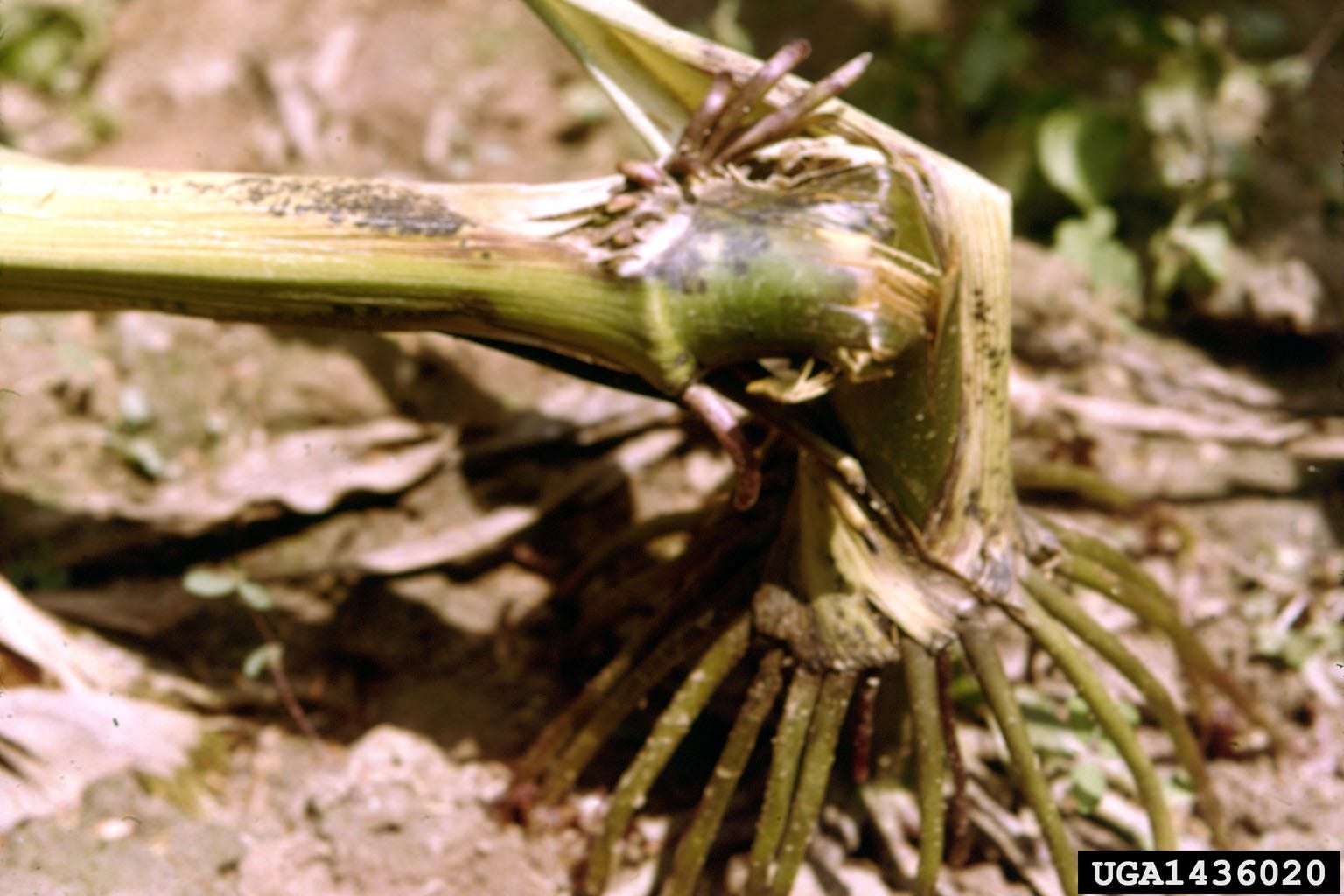Types Of Plant Lodging: Treating Plants Affected By Lodging


High-yield cereal crops must pass numerous tests as they go from seedlings to harvested products. One of the weirdest is lodging. What is lodging? There are two forms: root lodging and stem lodging. Overall, lodging is the displacement of stems or roots from their vertical and proper placement. It can cause lower yields and diminish nutrient density.
Causes of Plant Lodging
The causes of plant lodging are legion. High nitrogen levels, storm damage, soil density, disease, sowing date, overpopulation, and seed type are all contributing factors to lodging in cereal crops. The most common plants affected by lodging are corn, but other cereal and grain crops are also at risk. The two types of plant lodging can occur coincidentally or singly but their effect on the crop reduces overall health and harvest. Certain seed types, such as semi-dwarf cereals, may be less at risk than standard seed. The primary causes of plant lodging are overcrowding, wet soil, and excess nitrogen in soil. High plant populations and overly wet soil cause root lodging where roots are displaced from soil. Wet soil is unstable and does not afford an adequate foothold for young roots. Overpopulated fields prevent plants from growing tillers, which become crown roots-- the main anchors for the plant. High nitrogen levels create an environment that encourages stem and leafy growth, but the rapid rate can cause weak and skinny stems that are too feeble to hold themselves up. This is known as the stem lodging effect on plants.
Lodging Effect on Plants
Excess moisture or nitrogen and heavily populated fields are not the only reasons for plant lodging. The two types of plant lodging can also be caused by storm damage, which weakens stems and roots. Plants in shade or that grow excessively tall are also at risk for stem lodging. Weeds and fungal diseases are other conditions that affect shoots and roots. No matter the cause, the cereal becomes weaker and tends to form seed earlier. Yield is lower and the nutrient content is adversely affected. Corn yields are most affected if lodging occurs at the ear emergence stage. From a strictly mechanical perspective, stem lodged plants are harder to harvest and there is more waste. Stems are more susceptible to stalk rots as are disturbed roots.
Preventing Plant Lodging
New strains of cereal grains have been developed with semi-dwarf genes introduced. This minimizes lodging but also lowers yield. Setting seed farther apart, amending soil for proper drainage, delaying nitrogen fertilization, and plant growth regulators are all methods to reduce the loss from lodging. Plants affected by lodging should not receive nitrogen until the root system has had time to tiller and form crown roots. This means no fertilizer until the grain is three to four weeks old. Unfortunately, there's little you can do to control Mother Nature, so wind and rain will always be contributing factors to lodging. However, the new strains and some good agronomic practices should be beneficial in trimming the number of plants affected.
Gardening tips, videos, info and more delivered right to your inbox!
Sign up for the Gardening Know How newsletter today and receive a free copy of our e-book "How to Grow Delicious Tomatoes".

Bonnie Grant is a professional landscaper with a Certification in Urban Gardening. She has been gardening and writing for 15 years. A former professional chef, she has a passion for edible landscaping.
-
 8 Noteworthy Native Azaleas Every Gardener Should Know – And Grow!
8 Noteworthy Native Azaleas Every Gardener Should Know – And Grow!Native azaleas offer brilliant blooms in a range of colors and sizes. Here are a few favorites to get inspired and start working on a native shade garden!
-
 Growing Climbing Roses: How To Create Elegant Displays With Maximum Blooms
Growing Climbing Roses: How To Create Elegant Displays With Maximum BloomsMaster the art of growing stunning climbing roses with this essential guide to creating vibrant, fragrant walls and structures all summer long.
-
 How Many Vegetables To Plant Per Person For A Year
How Many Vegetables To Plant Per Person For A YearGauging how much to plant in a vegetable garden can eliminate waste while still producing enough for your family. Click for more.
-
 13 Perennial Fruits And Vegetables You Only Have To Plant Once
13 Perennial Fruits And Vegetables You Only Have To Plant OnceLooking to set it and forget it? Find out which fruits and vegetables can be grown as perennials.
-
 11 Edible Plants For A Year-Round Garden In A Bucket
11 Edible Plants For A Year-Round Garden In A BucketWant to know how to grow food inside your house and which foods do best indoors? Click here to learn all about it.
-
 Frost Tolerance Of Vegetables From Least To Most Hardy
Frost Tolerance Of Vegetables From Least To Most HardyHow cold can vegetables tolerate? Knowing which veggies will survive frosts and freezes is essential for the success of your garden. Click here for more.
-
 Best Vegetables To Pickle Straight From The Garden
Best Vegetables To Pickle Straight From The GardenPickles aren’t limited to just cucumbers. Read on for tips on pickling your fresh veggies.
-
 Benefits Of Planting In Fall Vs. Spring Vegetable Plots
Benefits Of Planting In Fall Vs. Spring Vegetable PlotsLearn why some vegetables do better if you plant them in fall instead of spring.
-
 Interplanting Vegetables In The Fall Garden
Interplanting Vegetables In The Fall GardenLearn all about the benefits of interplanting vegetables for your fall garden.
-
 Best Vegetables For Growing In Perlite
Best Vegetables For Growing In PerlitePerlite is a natural growing medium that comes from super-heated volcanic glass. In some cases, it works better than soil. Read on for more info.